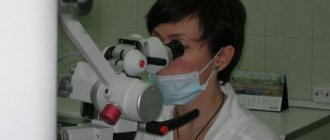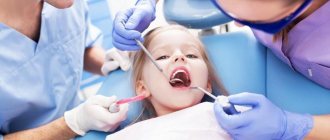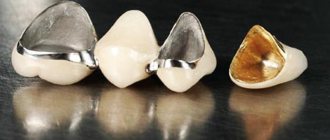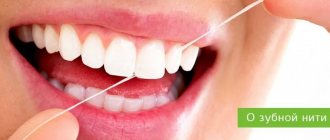With a wide variety of offers from dental clinics about a full range of services, it is worth knowing which doctor can perform tooth extraction and visiting only such specialists.
Every person at any age needs dental treatment, and sooner or later it becomes necessary to have a tooth removed. Our price in Dolgoprudny for this type of service is optimal, taking into account the availability of many drugs for pain relief and the work of real professionals. Often, in search of a specialist who can perform this manipulation, patients end up with inexperienced doctors. This can lead to complications. And only then, having understood the issue, it turns out that not every dentist actually has the right to carry out such manipulations. Therefore, if it is necessary to remove a tooth, price should not be a fundamental factor in choosing a doctor; it is important to know who exactly you need to contact.
Specializations in dentistry
There are different areas in dentistry, but they are all united by one task - maintaining the health and proper functionality of the dental system. The basic area is therapeutic dentistry, but there are other highly specialized areas.
For example, the tasks of a dental therapist include primary diagnosis, treatment of teeth and gums without the need to use highly specialized skills. Most often this is the prevention and treatment of caries and pulpitis, gum inflammation or, for example, tongue diseases. Along with the therapist, other specialists also work on the health and beauty of our smile:
- periodontist – works with diseases of gum tissue, periodontal and periodontal tissues,
- orthodontist – helps to correct the correct bite and straighten teeth,
- orthopedist – restores damaged and missing teeth by using various prosthetic methods,
- hygienist – specializes in the prevention of dental diseases, carries out comprehensive oral hygiene with the removal of plaque, supra- and subgingival deposits,
- a surgeon, including an implant surgeon, performs complex operations on the mucous membrane and jaw bone, implants implants, etc.
There are different directions in dentistry
. Important! Separately, we can distinguish a pediatric dentist who specializes in the treatment of temporary baby teeth and diseases of the oral mucosa in children.
A dental surgeon is a doctor who removes teeth. However, if a simple extraction is required, a general practitioner can successfully cope with this task. Many people also confuse an orthodontist and an orthopedist, but these are two completely different specializations. As mentioned above, the first one works with anomalies of the dental system - it is he who supervises the correction using orthodontic plates, braces and other corrective systems. As for the orthopedist, he is engaged in the restoration of teeth using removable and non-removable prosthetic devices - starting with crowns and ending with the installation of complete dentures on the entire jaw, including implants.
So, the surgeon is the same doctor who pulls out teeth. To understand the issue in more detail, we will consider possible indications for extraction and features of the procedure.
Maxillofacial surgeon
This specialist is needed for those whose bite pathology requires surgery. Usually this is a pronounced mesial bite or a combination of several disorders, especially with a pathological narrowing of the jaw. The operation itself is only one of the stages of treatment; in preparation for it and after it, you still need to wear braces to stabilize the occlusion (closing of the teeth) and improve the aesthetics of the smile.
Surgical correction of the bite: the jaws are given the correct shape, but the teeth still need alignment
In what cases is tooth extraction prescribed?
Such a radical measure is usually resorted to in cases where it is no longer possible to save the causal element. As part of the procedure, the doctor carefully removes the tooth along with the root. Moreover, it is important that this is done extremely carefully, with minimal trauma to the surrounding bone tissue and mucous membrane. Thus, the procedure is prescribed if the following indications exist:
- pronounced mobility with destruction of periodontal bonds as a result of the development of periodontitis, periodontitis or the formation of an extensive cystic formation,
- serious injury with root fracture,
- complete destruction of the crown with inflammation of the root,
- problematic eruption of eights (wisdom teeth),
- the need to correct the bite in case of severe crowding - in such a situation, it is sometimes necessary to remove one or more healthy elements in order to restore the aesthetics and functionality of the entire jaw apparatus.
Extraction may be prescribed for a severely damaged tooth.
Timely extraction saves from the uncontrolled spread of the inflammatory process to healthy mucosal tissue and neighboring teeth. To avoid the development of complications after the procedure, it is important to strictly follow the doctor’s recommendations. In the future, it will be possible to fill the gap in the series with the help of a bridge or prosthetics on an implant - the second option is more preferable.
Removal methods
There are two main types of extirpation - a simple removal method and a complex method.
Complex removal method
It is carried out in cases where there is no access to the tooth, application of forceps is impossible and additional access must be made through an incision in the gums. During a complex operation, the tooth is not removed immediately, but in parts.
For this, a whole set of special tools is used:
- laser,
- saw,
- scalpel,
- burs.
Complex removal may be indicated in the case of a cystic formation under the causative tooth, fistula, dystopic wisdom tooth, or retention. Contraindications to the procedure are pregnancy, allergies to anesthetic drugs, mental illness, problems with the endocrine system. But if certain conditions are created, extirpation can be carried out even in the presence of these contraindications.
Simple operation
This method does not require additional preparation; it is removed by applying standard forceps, after which the bleeding stops and further measures are taken to restore the dentition.
How the procedure is performed - extraction options
First, the specialist must examine the oral cavity, select the appropriate anesthesia method and extraction method. In some cases, due to an acute inflammatory process, removal is postponed until the next appointment. In the meantime, the doctor prescribes the patient a course of antibiotics to relieve acute symptoms and normalize the condition.
The operation is performed under local anesthesia. If a patient has a strong, overwhelming fear of dental treatment (dental phobia), deep sedation may be offered to relieve anxiety. In rare cases, the procedure is performed under general anesthesia, but recently experts are more often giving preference to deep sedation as a safer and no less effective alternative.
To extract a tooth from its socket, the doctor may use one of the following techniques:
- simple extraction: using special forceps, the surgeon grabs the crown and then carefully removes it along with the root. Incisors, canines and molars are first rotated, double-rooted molars are swung,
- complex – if the tooth needs to be extracted in parts or the remaining root must be removed. The doctor has to saw the crown and root system, cut out the root using different attachments for a drill, make incisions on the gum if the element is impacted,
- atypical - first, the specialist makes a trapezoidal incision on the surface of the gum and peels off a flap of the mucous membrane to open access to the alveolar socket. Next, he saws the crown and roots with a bur and then carefully pulls them out piece by piece. By the way, the same technique is relevant for cases of fracture of the root apex1.
For simple removal, the doctor uses special forceps.
After removing the tooth from the socket, the specialist carefully cleans the wound from small fragments, treats the tissue with antiseptics and places a sterile swab in the socket. If necessary, applies sutures or fixes the drainage system to ensure the outflow of purulent masses. Finally, the patient receives explanations on how to care for the socket after removal. You can read more about them in our special article.
A reliable doctor always works with quality guarantees
If it is necessary to remove a tooth, the cost and expectation of pain, as well as the fear of complications, often cause the patient to be afraid to go to the clinic.
In our dentistry, everything is created in order to create psychological comfort for the patient. Very high-quality anesthesia, real professionals with many years of experience and modern equipment allow painless removal of any complexity. The financial benefit of visiting our clinic is that the doctor guarantees the absence of complications, and therefore you will not have to visit the dentist again and again. Our specialists can solve dental problems of any complexity without the slightest difficulty.
Features of complex extraction
First, the doctor conducts a visual examination and palpation, studies x-rays and uses them to assess the condition of the bone tissue and periodontal tissue. Only after a thorough examination of all aspects of the clinical picture can a specialist make a final verdict. Based on the same X-ray image, he determines the number of roots, the shape and depth of their occurrence, and assesses the complexity of the work ahead.
Further, the procedure in most cases is carried out according to the following scheme:
- the surgeon makes an incision on the mucosa to provide direct access to the cervical area,
- if it is necessary to separate the teeth, the doctor saws the crown and root system, after which he literally saws it out of the bone tissue in order to remove the tooth in parts,
- then he lowers special forceps to the very edge of the alveolus, clamps the instrument, fixes it and, carefully twisting or rocking the tooth, removes it from the socket,
- the flap of tissue is returned to its place and sutures are applied.
Complex tooth extraction is a full-fledged operation.
As mentioned above, the procedure can be performed both under local anesthesia and with additional deep sedation. And only in exceptional cases is the use of general anesthesia allowed.
Otolaryngologist
Cases where there is a direct connection between problems with the respiratory system and bite are not frequent, but sometimes a consultation with an ENT doctor is necessary. This is especially true for those who, before contacting an orthodontist, suffered from chronic ENT diseases with frequent exacerbations and impaired nasal breathing.
At the first appointment, the orthodontist collects information about the patient and asks about other diseases. A complete picture of your health condition will help you prescribe comprehensive treatment to achieve the best result and minimize the risk of regression.
We delete and do not resist
Despite the rapid development of methods in dentistry, there are still situations when it is necessary to agree to tooth extraction. Moreover, most often the procedure must be carried out urgently in order to prevent the spread of infection and relieve pain. Unconditional indications for tooth extraction are:
- An acute form of osteomyelitis caused by a diseased tooth. This is a severe bone lesion that even affects the bone marrow. This state of affairs is dangerous for your health. The disease is accompanied by acute, unbearable pain and body temperature up to 40 degrees.
- Advanced periodontitis. The rotting of the root membrane is very difficult to stop if you try to save the tooth. In this case, the situation is dangerous because the rotting zone can increase and affect neighboring areas of the jaw.
A tooth can also be removed if it is the cause of other diseases: neuritis, phlegmon, lymphadenitis, sinusitis, etc. In addition, there are non-infectious indications for removal . The doctor may suggest removing a tooth if:
- It grows out of line and interferes with the formation of a correct bite. Sometimes timely tooth extraction allows a child to return a beautiful smile without any braces. Sometimes it is necessary to combine these types of treatment.
- It is located at the site of fusion of a broken jaw. If the jaw is injured, surgical intervention is required for its proper fusion. A tooth located at the fracture site may interfere with the process. Once the jaw has been restored, a new tooth can be grown in place of the hole if you deem it necessary for functional or aesthetic reasons.
Pull a tooth out?
You might think that removing a tooth will solve all the problems - no tooth, no problem. But this is a big misconception. There will be many more problems! Nature does not tolerate emptiness, and if, for example, a tooth is missing on the lower jaw, the two neighboring ones will definitely tilt, and the upper tooth will creep down. In this case, implantation and prosthetics are necessary.
Before prosthetics, it is necessary to carry out a complete sanitation of the oral cavity, which means that you will face large treatment costs in a shorter period of time.
Sometimes people come to us with a request to remove a tooth, based on immediate savings of time and money. Although upon examination it turns out that the tooth can be cured, with high quality and with a guarantee.
The vast majority of hardcore lovers of “no treatment” are young people aged 17–30. At this age, they rarely think about the consequences.
Dentist and stomatologist: what is the main difference?
A dentist is a doctor who has received a higher medical education at a university with a specialty in Dentistry. After completing general training, he chooses a specialization - therapeutic, surgical treatment, prosthetics.
The word “dentist” is rarely used in our country; most often this is the name given to foreign specialists involved in the treatment of oral diseases. In the Russian-speaking environment, it is synonymous with the concept of “dentist”.
Who is this? These are specialists with secondary specialized education who graduated from medical college and also have the right to treat teeth. In addition, they include dental technicians who make dentures. Thus, dentist and dentist are not exactly synonymous, but in some situations the words can be replaced.
What does a dentist do?
A dentist is essentially a dental assistant. His responsibilities include conducting preventive examinations and physical procedures, treating simple dental diseases - caries, stomatitis, periodontitis.
A mid-level medical worker can provide first aid for acute inflammatory processes and knows the basic technique of tooth extraction. If necessary, he gives a referral to a more highly qualified specialist - a dentist.
Caring for your oral cavity after surgery
The speed of wound healing depends on how you follow the rules of hygiene. Also, proper care allows you to avoid infection of the hole and aggravation of problems.
- Do not eat food for the next 4 hours after the procedure. The first time, try to eat something soft: cream soup or puree. Under no circumstances should you eat hot food. The same goes for drinks.
- Don't touch the hole. Neither with language, nor with any objects. For effective healing, it is very important to maintain the integrity of the blood crust that has formed on the wound.
- You won't be able to brush your teeth for a few days. To keep your mouth clean, rinse your mouth with a baking soda solution (half a teaspoon per glass of water). A decoction of chamomile, calendula or oak bark also disinfects and promotes healing.
- During the first weeks, brush your teeth only with a soft or ultra-soft toothbrush so as not to irritate your gums. Use the toothpaste recommended by your doctor - it will promote healing.
- For two to three days after surgery, try to refrain from smoking, drinking alcohol, and using the sauna. All this can negatively affect the condition of the crust while it has not yet hardened.
Full recovery will occur in 2-3 weeks, then you can return to your normal rhythm of life. In complex surgeries where you have to wait for bone tissue to grow, recovery may take up to 14 weeks . But still, after the first three, you will be able to eat normally, and your gums will not be sensitive to temperature.
Indications for visiting a dentist
If something hurts or bothers you in your mouth, this is a direct indication for visiting a dental office or dental clinic. The primary examination will be carried out by a therapist, and then, depending on the clinical picture and symptoms, he will either conduct treatment himself or refer the patient to the appropriate specialist.
Treatment with a therapist will be required if the following symptoms occur:
- Sensitivity of teeth to thermal effects, to sour and sweet foods has arisen.
- Spots or depressions, so-called carious cavities, appear on the enamel.
- Uncomfortable sensations appeared in the process of chewing food, closing the jaws, sudden “shots” of pain or constant pain.
Indications for visiting a hygienist:
- Visually noticeable hard yellowish formations are tartar at the border where the gum adheres to the tooth.
- Changes in enamel color - darkening, yellowing, appearance of spots of different colors.
Indications for visiting an orthopedist:
- Destruction of the tooth crown by more than 40%.
- Congenital or acquired disorders of the appearance of teeth, their shape, size, structure.
- Injuries to teeth due to the formation of cracks and chips.
- Wide interdental gaps.
- Pigmentation of dentin due to age-related changes or hemorrhage.
- The absence of one tooth, several or complete edentia.
- Impaired diction, the cause of which is some kind of dentofacial anomaly.
Indications for visiting an orthodontist:
- Curvature of the teeth, their incorrect position in the dentition, especially in combination with non-closure of the lips.
- Incorrect closure of the dentition.
- The lower jaw protrudes forward and overlaps the upper jaw.
- Crossbite.
Indications for visiting a surgeon:
- Destruction of the crown due to advanced caries, fracture, dislocation of a tooth without the possibility of its preservation and restoration due to injury or accident.
- Severe toothache that does not subside even after taking painkillers.
- If your wisdom teeth are bothering you.
- Irregularly positioned or difficult to erupt teeth.
- Injuries, damage, diseases of the soft tissues of the oral cavity or jaw bones.
Indications for visiting a periodontist:
- Any disturbances in the structure and function of the gums - bleeding, looseness, pallor, redness or cyanosis, swelling, pain, hypertrophy. The appearance of a whitish, serous plaque on the gums. Ulceration of the gum edge, its detachment from the tooth enamel (exposure of the parts of the tooth that are under the crown - neck and root), necrosis of periodontal tissue.
- A feeling as if the tooth has become taller or a visual lengthening of the tooth without mobility.
- Unpleasant, putrid odor from the mouth.
- Lack of periodontal and gum pockets.
- The formation of first spaces, then gaps between the teeth.
- Mobility, displacement, loss of healthy teeth.
- The above symptoms are accompanied by general malaise and enlarged lymph nodes in the neck.
Important! You should also contact a dentist if there is absolutely nothing bothering you. Preventative examination 1 or 2 times a year in combination with professional hygienic teeth cleaning at the same frequency are the best methods for preventing any oral diseases.
to contents ^
Where does he receive it?
You can get a free consultation, take an x-ray, and treat some diseases free of charge in public dental hospitals if you have a medical insurance policy. You must first make an appointment through the receptionist or nurse.
In private clinics, medical centers and offices, appointments and treatment by a dentist are paid. Prices for services vary greatly, on average the cost of a consultation is from 500–600 rubles, treatment – from 1.5–3 thousand rubles.
Experience, cost of appointment and treatment largely depends on the category of the dentist. Reviews on the website and forums will help you choose a good private clinic.
Table of dentist categories in ascending order
| Category | Experience, skills |
| Second category | At least 3 years of experience, good theoretical and practical training, knowledge of modern methods of treatment, diagnosis, and prevention of major dental diseases. |
| First category | Work and practice experience of at least 7 years, knowledge of related disciplines, participation in scientific and practical activities. |
| Highest category | More than 10 years of experience, high practical and theoretical training, knowledge of all modern methods of treating dental pathologies. |
If you consider your case to be unusual, it is recommended to choose a doctor of the highest category
Orthopedist
If the help of a therapist and periodontist did not produce results and the tooth could not be saved, it becomes necessary to install a prosthesis. This is what orthopedists do. At the first stage, their task is to obtain an impression of the tooth. Based on the results obtained, the dental technician makes a prosthesis. After this, the orthopedist first performs the so-called fitting, and then the final installation of the artificial tooth. There are many different options for prosthetics, from installing crowns to using removable jaws.
Konychev Evgeniy Alexandrovich
orthopedic dentist
More details
Turovets Alexander Igorevich
orthopedic dentist
More details
Periodontist
The teeth in the oral cavity are surrounded by soft tissue. They are in a rather vulnerable position and can suffer from various diseases. Periodontists are specialists who primarily deal with this problem, as well as the condition of the mucous membrane. In particular, such doctors, when tartar or other deposits appear above or below the gum, remove these tumors. When treating, periodontists often use so-called applications, applying medications directly to the area affected by the disease.
Kravets Olga Yurievna
Dentist, periodontist
More details
Orlova Elena Lvovna
dentist, periodontist
More details











